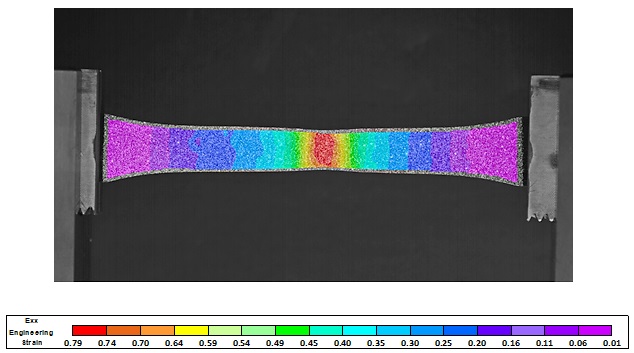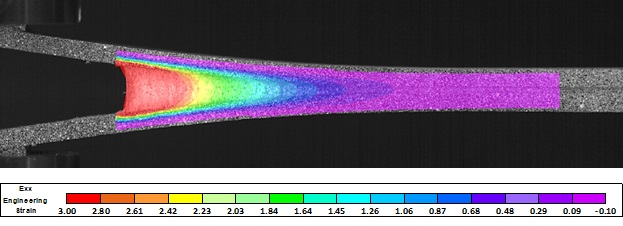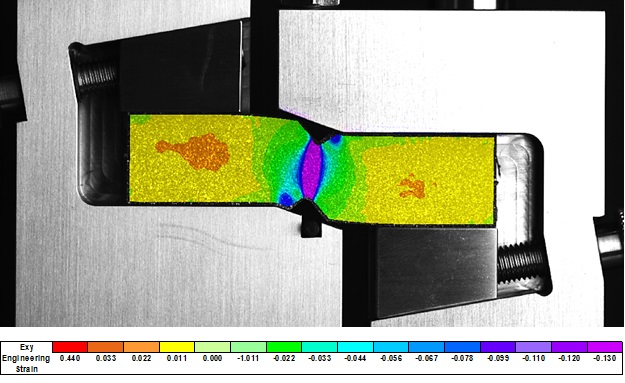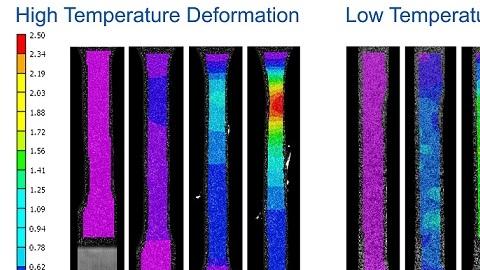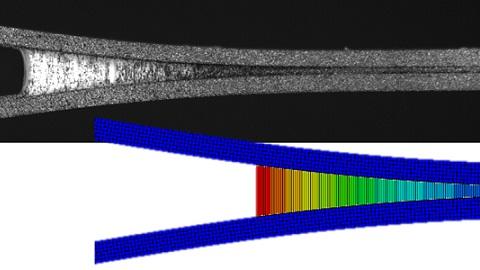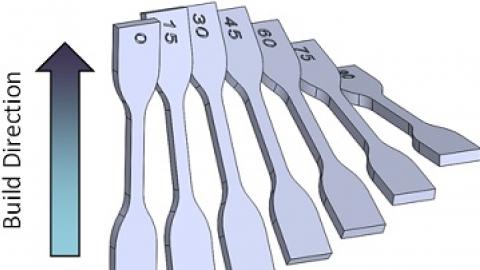Accurate and reliable deformation measurements are a cornerstone of materials testing. Traditional methods, including strain gauges and extensometers, are both accurate and reliable; however, they provide information only at the site of application. A more advanced technology, digital image correlation (DIC), is capable of producing non-contact full-field strain measurements of deforming bodies. Veryst analyzes global deformation measures, such as specimen elongation, as well as strain localizations with this technology. Veryst also uses this methodology to measure local deformation, such as the true strain in a necked tensile specimen. We can also perform biaxial measurements, permitting the calculation of Poisson’s ratio or Lankford coefficients (r-values).
The use of non-contact measurements also allows for the testing of fragile or soft materials which may be negatively influenced by an extensometer that is physically attached to the specimen. When coupled with our high-speed camera, Veryst can determine surface strains of objects deforming at high rates of strain.
While DIC is useful in measuring deformation for standard tensile and compressive tests, it also proves helpful during custom or non-standard tests. It is possible to track the speckle pattern for a wide range of geometries and test types, including shear testing [lap shear and Iosipescu (V-Notch)]. We can also measure properties of adhesives during peel tests, cleavage tests, and cantilever beam tests. We additionally use this technology to determine other important variables such as shear strains and rotational measurements.
This video below shows a thin film notched tension test of low-density polypropylene. The sample has been speckled with paint to measure the strains using DIC up until failure. We use this data to validate material models and determine the failure behavior of the material.
